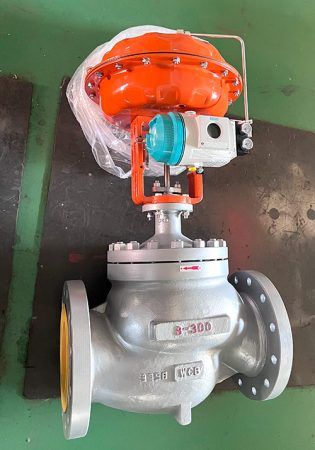
A steam reducing valve? allows you to control and maintain safe steam pressure within your system. Using a steam reducing valve? is essential to prevent dangerous situations that can arise from excessive pressure. If the pressure becomes too high, several safety issues may occur, such as:
- Boiler explosions caused by too much pressure or damaged components.
- Water shortage accidents due to poor monitoring.
- Flue explosions resulting from improper fuel control.
Steam reducing valves? are commonly used in systems that also feature an electric valve, pneumatic valve, or a pneumatic control valve. By working together, these valves help safeguard your equipment and improve overall system performance by ensuring steam pressure remains at a safe level.
Steam Reducing Valve Basics
What Is a Steam Reducing Valve
A steam reducing valve is very important in steam systems. It helps lower and control steam pressure as it moves through the system. Experts say a steam reducing valve keeps the pressure after the valve steady and lower than before the valve. This works even if the supply pressure or how much steam you use changes. You can set the valve to any safe pressure, and it will keep that pressure by itself. The steam pressure reducing valve does not need outside power to work. It uses its own parts to sense and change the pressure. There are different types, like spring-loaded and pilot-controlled valves. Each type is good for different jobs and needs. If you pick, install, and take care of the valve the right way, it will work well and last a long time.
Key Components
Inside a pressure reducing valve, you will see a few main parts. Each part has a job to do:
- Valve Body: This holds all the parts and connects to the steam pipes.
- Spring: This lets you set the outlet pressure you want.
- Diaphragm or Piston: This part senses the pressure after the valve and moves to open or close it.
- Valve Seat and Plug: These control how much steam goes through the valve.
- Adjustment Screw: You turn this to change the set pressure.
All these parts work together to keep the pressure steady. The spring and diaphragm push against each other inside the valve. If the pressure after the valve drops, the spring opens the valve more. If the pressure goes up, the diaphragm closes the valve. This keeps the pressure at the level you set.
Common Applications
You can find pressure reducing valves in many places. They help control steam in schools, hospitals, and office buildings. They are used in food plants to keep steam steady for cooking or cleaning. Textile factories use them for drying and pressing. Chemical plants need them for safe and steady steam during reactions. Power plants use them to run turbines with steam.
Pressure reducing valve systems keep your equipment safe and make your steam system work better. They let you give each part of your process the right steam pressure.
Tip: Pressure reducing valves can handle many different pressures. For example, low and medium pressure valves work with inlet pressures from 0 to 300 psi and outlet pressures from 0.1 to 100 psi. High-pressure valves can handle much higher ranges, up to 6000 psi inlet and 300 psi outlet. Always check the pressure range before you pick a valve.
| Regulator Type | Typical Inlet Pressure Range | Typical Outlet Pressure Range |
|---|---|---|
| Low/Medium Pressure | 0 – 300 psi (0 – 20 bar) | 0.1 – 100 psi (7 mbar – 7 bar) |
| Industrial High Pressure | 300 – 3000 psi (20 – 200 bar) | 5 – 250 psi (0.3 – 17 bar) |
| Specialized High Pressure | Up to 6000 psi (up to 400 bar) | 10 – 300 psi (0.7 – 20 bar) |
Pressure Reducing Valve Function
A pressure reducing valve for steam works by balancing forces inside. You set the outlet pressure with the spring. The diaphragm checks the pressure after the valve. If the pressure drops below your set point, the spring opens the valve more. More steam flows through and raises the pressure. If the pressure goes above your set point, the diaphragm closes the valve. This lets less steam through and lowers the pressure.
Here is how a pressure reducing valve works step by step:
- The valve changes the inlet pressure to a set outlet pressure by letting in more or less steam.
- A sensor inside the valve checks the pressure after the valve.
- If the pressure after the valve goes up, the valve opening gets smaller to let in less steam.
- If the pressure after the valve goes down, the valve opening gets bigger to let in more steam.
- The spring and diaphragm keep moving the valve to hold the outlet pressure steady.
You do not have to move the valve by hand. The valve changes by itself when your system changes. This makes the steam pressure reducing valve a good choice for keeping your steam system safe and working well.
Pressure reducing valve systems help you give each part of your plant the right pressure. For example, you might need high pressure for one job and low pressure for another. The valve lets you send the right pressure to each place. This keeps your equipment safe and helps you avoid damage.
Pressure reducing valves do many important jobs in your steam system:
- Change and hold the steam pressure after the valve at a steady value.
- Make sure there is enough steam flow for what you need.
- Protect equipment from damage from high pressure.
- Make setup easier and cheaper by controlling pressure without extra temperature controls.
- Change by themselves when the pressure changes using their own parts.
- Keep steam safe and steady even when you use more steam.
A pressure reducing valve for steam is a smart way to keep your system running well. You can count on it to change when needed and keep your steam pressure just right.
Why Reduce Steam Pressure
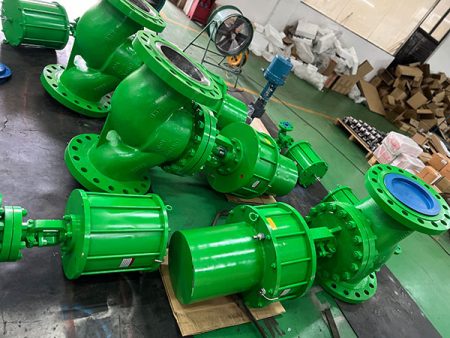
Safety
It is important to keep your steam system safe. High steam pressure can cause accidents. If the pressure gets too high, boilers might explode. These explosions can hurt people and damage buildings. High pressure also makes steam leaks more likely. Leaks waste energy and can burn people nearby.
Note: Lowering steam pressure helps stop flash steam loss. It also lowers the risk of sudden bursts in pipes or valves.
A steam pressure reducing valve helps you control the pressure. This keeps it at a safe level. It protects your equipment and people working near the system. It also lowers the chance of waterhammer. Waterhammer is a loud banging noise in pipes. It happens when steam moves too fast or hits water. Waterhammer can break pipes and valves.
Efficiency
You want your steam system to work well. You do not want to waste energy. A steam pressure reducing valve matches the steam pressure to what you need. This means you do not use extra steam. Lower steam pressure also lowers the steam temperature. This helps stop heat loss as steam moves through pipes.
- Reducing steam pressure at the point of use matches the pressure to what the process needs. This stops energy waste.
- Pressure reducing valves lower pressure in certain places. This gives drier steam and better heat transfer.
- Lower steam pressure lowers the saturation temperature. This cuts down heat loss in the system.
If you control the pressure well, you use only the steam you need. This saves money on fuel and water. You also use less steam to heat water in other parts of the system. This means you use less water and fewer chemicals.
Tip: Sending steam at high pressure lets you use smaller pipes. This saves money when you install the system. You can then use pressure reducing valves to lower the pressure where needed.
Equipment Protection
Your equipment can only take so much pressure. If you go over the limit, you might break important parts. Boilers, heat exchangers, and steam traps can get damaged. A steam pressure reducing valve keeps the pressure below the safe limit. This helps you avoid repairs and downtime.
- Boilers and pressure vessels can get damaged by too much steam pressure.
- Steam traps, heat exchangers, and turbines can fail if the pressure is too high or if wet steam forms.
- Boiler tubes and pipes can wear out faster from erosion and corrosion if the pressure is not controlled.
Pressure reducing valves help protect your equipment. They make your system last longer. They also help your process run smoothly. This is important for making products safely and on time.
Types of Steam Pressure Control Valves
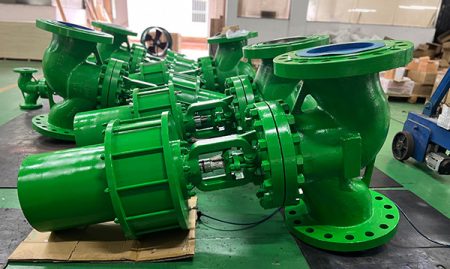
Steam systems use several types of pressure control valves. Each type has a special job and works best in certain situations. You will often see these main types in industry:
- Electric steam valves use electric motors to open and close. You can control them from a distance. They help you manage steam temperature and pressure.
- Industrial ball valves have a ball inside that turns to let steam through or block it. These work well for high-pressure steam and can be manual or automatic.
- Globe valves move up and down to control how much steam flows. You can use them to start, stop, or adjust steam flow. They work well if you need to change the flow often.
- Butterfly valves use a disc that turns to open or close the valve. These are easy to use and do not slow down the steam much. They fit well in tight spaces.
- Gate valves slide a gate up and down to let steam through or stop it. When fully open, they do not slow the steam at all.
Self-Operated Pressure Control Valves
You will find self-operated pressure control valves in many steam systems. These valves do not need electricity or air to work. They use the steam’s own pressure to control how much steam passes through. This makes them simple and reliable.
A self-operated pressure reducing valve has three main parts. The valve itself opens and closes to let steam through. A diaphragm or piston senses the pressure after the valve. A spring sets the pressure you want. When the pressure after the valve goes up, the diaphragm pushes against the spring and closes the valve a bit. When the pressure drops, the spring pushes the valve open more. This keeps the pressure steady without any outside help.
Tip: Self-operated valves combine sensing, controlling, and moving parts in one device. You do not need extra wires or air lines. This makes installation easy and keeps costs low.
You can use self-operated pressure reducing valve systems in places where you want simple, automatic control. These valves work well in small buildings, schools, and factories. They help you keep steam pressure safe and steady, even if the steam demand changes.
Self-operated pressure reducing valves offer several advantages:
- No need for outside power, so you save on wiring and energy.
- Simple design means fewer parts to break.
- Easy to install and maintain.
- Good for steady, low to medium steam flow.
If you want a valve that works on its own and keeps your steam system safe, a self-operated pressure reducing valve is a smart choice.
Comparison
When you pick a steam pressure control valve, you should know how each kind works. Every valve type has things it does well and things it does not. You want to choose the one that fits your system best.
There are three main types: self-operated, direct-acting, and pilot-operated valves. You can compare them by how fast they react and how close they keep the pressure to your setpoint.
Here is a table that shows the main differences:
| Valve Type | Response Time | Accuracy (Offset from Setpoint) |
|---|---|---|
| Direct-Acting | Fastest response due to direct diaphragm-to-valve plug linkage | Lower accuracy, needs 20-40% offset |
| Pilot-Operated | Slower response because pilot valve adjusts before main valve moves | Higher accuracy, needs only 1-5% offset |
| Self-Operated | Rapid, but generally slower than direct-acting; smooth and stable | Good accuracy, usually within ±1% |
Direct-acting valves move very fast. The diaphragm is linked right to the valve plug. When the pressure changes, the valve opens or closes right away. This gives you quick control. But the pressure may not stay close to your setpoint. It can change by 20% to 40%. If you need fast action and can handle some pressure change, this type is good.
Pilot-operated valves are more accurate. The pilot valve checks the pressure first. It makes small changes before the main valve moves. This takes a little longer, so it is slower to react. But the pressure stays close to your setpoint, usually within 1% to 5%. If you need steady pressure for sensitive machines, pilot-operated valves are best.
Self-operated valves are in the middle. They react quickly, but not as fast as direct-acting valves. Their movement is smooth and steady. The pressure stays close to your setpoint, often within ±1%. These valves are good if you want simple, automatic control without extra power.
Tip: Pick direct-acting valves for fast changes. Choose pilot-operated valves for steady, exact pressure. Use self-operated valves for easy, automatic control.
Think about what your system needs. Direct-acting valves are good for small systems that change quickly. Pilot-operated valves are better for big systems where accuracy is important. Self-operated valves are great if you want simple setup and little maintenance.
When you compare these valves, look at how fast they react and how close they keep the pressure to your goal. This helps you pick the right valve for safety, saving energy, and protecting your equipment. Each type is useful in steam systems. Your choice depends on what matters most for your job.
Steam Reducing Valve Operation
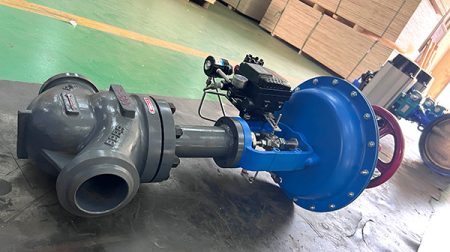
Pressure Sensing
You need to know how a pressure reducing valve senses changes in steam pressure. The valve uses special parts to feel the pressure after the valve. In direct-acting valves, the steam pushes on a flexible part called a diaphragm or bellows. When the pressure goes up, the diaphragm moves and tells the valve to close a bit. When the pressure drops, the diaphragm lets the valve open more. This simple design works well for small systems.
Pilot-operated valves use a different method. These valves have a small pipe, called a sensing line, that connects to a pilot valve. The pilot valve checks the pressure after the main valve. If the pressure changes, the pilot valve sends a signal to the main valve. This signal tells the main valve to open or close. You get more accurate control with this setup, especially in bigger systems.
Tip: The sensing parts in a pressure reducing valve work without electricity or outside power. They use only the steam’s own pressure to sense and control the system.
Valve Adjustment
You can adjust a pressure reducing valve to set the steam pressure you want. Most valves have an adjustment screw or knob. When you turn this screw, you change the force of a spring inside the valve. The spring pushes against the diaphragm or bellows. This sets the pressure that the valve will try to keep after it.
Here is how the adjustment works in different types of valves:
- In direct-acting valves, you turn the screw to make the spring tighter or looser. A tighter spring means higher outlet pressure. A looser spring means lower pressure.
- In pilot-operated valves, you adjust the pilot valve’s spring. The pilot valve then controls the main valve to match your set pressure.
You do not need to adjust the valve all the time. Once you set it, the valve keeps working on its own. This helps you keep your steam system at optimal working conditions.
Maintaining Set Pressure
A pressure reducing valve keeps the steam pressure steady, even when your system uses more or less steam. The valve does this by balancing the spring force against the pressure after the valve. When the steam demand changes, the valve opens or closes to keep the pressure at your set point.
Let’s look at how each type of valve maintains set pressure:
| Valve Type | How It Maintains Set Pressure | Key Features and Effects on Pressure Control |
|---|---|---|
| Direct-acting Valve | Uses a spring and diaphragm or bellows. The valve opens or closes as the downstream pressure changes. | Simple and self-contained. Some pressure “droop” happens when the steam demand changes. Best for small loads. |
| Pilot-operated Valve | Uses a pilot valve to control the main valve. The pilot valve senses pressure and sends a signal to the main valve for quick changes. | Very accurate. Responds fast to changes in steam demand. Good for large loads and tight pressure control. |
When you use a direct-acting valve, you may notice a small drop in pressure when your system uses more steam. This is called “droop.” It happens because the valve needs to open more to let extra steam through. The pressure reducing valve still keeps the pressure close to your set point, but not as tightly as a pilot-operated valve.
Pilot-operated valves give you tighter control. The pilot valve senses even small changes in pressure and quickly tells the main valve to adjust. This keeps the pressure steady, even if your steam demand changes a lot.
Note: Both types of valves use only steam pressure to work. You do not need wires or extra power. This makes them reliable and easy to use.
A pressure reducing valve helps you protect your equipment and keep your steam system safe. You get steady pressure, better energy use, and fewer problems with your steam lines.
Valve Selection & Installation
Sizing
You need to size a steam reducing valve carefully. Do not pick a valve just because it matches your pipe size. Many times, the right valve is smaller than the pipe. If you choose a valve that is too big, you may face control problems, leaks, or even need a larger safety relief valve. If you pick a valve that is too small, it cannot handle the steam flow you need.
Here are the main things you should check when sizing a steam reducing valve:
- Inlet Pressure (P1): This is the pressure before the valve. Make sure the valve can handle this pressure.
- Outlet Pressure (P2): This is the pressure you want after the valve. Set this based on what your equipment needs.
- Flow Rate (Q): Know how much steam your system uses. The valve must handle this amount.
- Valve Sizing Coefficient (Cv or Kv): Use the value from the manufacturer to pick the right size.
- Safety Margin: Add a little extra (about 10-20%) to cover changes in flow or pressure.
- Valve Type and Construction: Choose the right kind of valve for your system.
Tip: Try to select a valve that works best when it is 60-80% open at full flow. This gives you better control and longer valve life.
Material Choice
You must pick the right material for your steam reducing valve. Steam is hot and can be harsh on metals. The valve must last a long time and stay safe. Here is a table that shows common materials and why you might use them:
| Material Type | Reason for Use |
|---|---|
| Carbon Steel (ASTM A216) | Handles high heat and strong enough for steam up to 400°C. |
| Stainless Steel | Resists rust and stands up to heat and stress. |
| Bronze | Good against wear and works well with steam. |
| Alloy Steel | Very strong and good for high-pressure steam. |
| Nickel Alloys (Inconel, etc) | Best for very hot or harsh steam conditions. |
| Sealing Materials (Graphite, PTFE, Metal) | Keep the valve tight and stop leaks, even at high pressure and temperature. |
You should always match the valve material to your steam system’s needs. This helps your valve last longer and keeps your system safe.
System Requirements
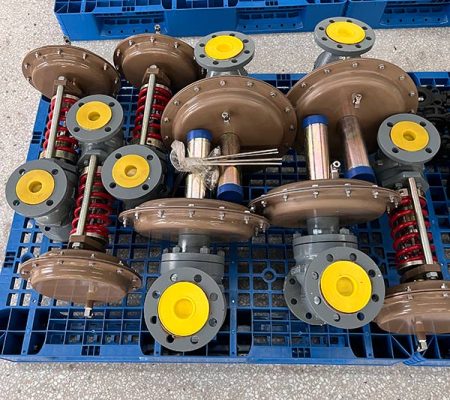
Before you choose a steam reducing valve, you need to look at your whole system. Think about these important points:
- Control Needs: Know the temperature, pressure, and flow rate you want to control.
- Safety Position: Decide if you need the valve to stay open or closed if something fails.
- Steam Details: Check the steam’s density, temperature, and other properties.
- Pressure Details: Write down the highest, normal, and lowest pressures before and after the valve.
- Flow Needs: Find out the highest, normal, and lowest steam flow your system will use.
- Valve Material: Pick a material that fits your steam and environment.
- End Connections: Make sure the valve fits your pipes.
- Power Source: See if you have electricity, air, or no power at your site.
- Environment: Think about dust, chemicals, or other tough conditions.
- Temperature Control: Decide if you need a fixed or changing setpoint.
Note: Always check the maximum pressure drop and make sure your piping has the right extras, like strainers and drip legs. This helps your valve work well and last longer.
By checking these points, you can pick a steam reducing valve that fits your system and keeps everything running safely and smoothly.
Installation Tips
Putting in a steam reducing valve the right way helps your system stay safe. It also makes the valve last longer. Here are some tips you should follow:
- Put the valve in a horizontal pipe. Keep the spindle straight up. This helps the valve work well and last longer.
- Make sure the pipes before and after the valve are straight. They should be clean and held up well. This stops stress and helps the valve work smoothly.
- Always check the valve’s position and which way the steam goes. The arrow on the valve shows the steam’s path.
- Use a Y-strainer before the valve. The strainer catches dirt and small bits. This keeps the valve safe inside.
- Add a drip pocket before the valve. The pocket takes water out of the steam. This stops damage and loud banging noises.
- Put isolating valves on both sides of the steam reducing valve. These valves let you turn off the steam for repairs.
- Add a bypass line with a good valve. The bypass lets you keep things running while you fix the main valve.
- Use the right seals and gaskets. Good seals stop leaks and keep things safe.
- Make the discharge pipe bigger by one size after the valve. This lowers steam speed and noise. It helps the valve last longer.
- Put pressure gauges before and after the valve. Use siphon pipes and isolation valves with the gauges. This helps you check pressure and find problems early.
- Make sure there are at least ten pipe diameters of straight pipe after the valve before any heat exchanger. For big drops in pressure, use twenty diameters before the pipe turns.
- Teach workers to use the valve the right way. Using it right keeps the valve working well.
Tip: Always do what the manufacturer says. If you are not sure, ask a trained installer for help.
Here is a table to help you remember the steps:
| Step | Why It Matters |
|---|---|
| Horizontal installation | Stops water buildup and damage |
| Use Y-strainer | Keeps dirt and debris out |
| Add drip pocket | Takes out water, stops damage |
| Check alignment and flow | Makes sure it works right |
| Install isolating valves | Makes repairs easy |
| Add bypass line | Lets system run during repairs |
| Use proper seals | Stops leaks |
| Enlarge discharge pipe | Lowers noise and wear |
| Install pressure gauges | Helps you check and fix problems |
If you follow these tips, your steam reducing valve will work well and last longer. Good installation keeps your steam system safe and helps it run better.
Troubleshooting Pressure Reducing Valves
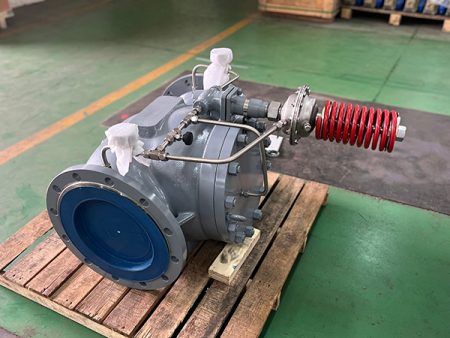
Pressure Fluctuations
You may notice your steam system does not keep a steady pressure. Pressure fluctuations can make your equipment work poorly or even cause damage. Several common reasons lead to this problem in pressure reducing valves:
- Inadequate downstream volume: If the pipe after the valve is too small, pressure changes quickly when the valve opens or closes. This makes the system unstable.
- Poor sense line placement: If you put the pressure sensing line near elbows or other valves, it picks up signals that jump up and down. The valve reacts too fast or too slow, causing erratic pressure.
- Oversizing of the regulator: If the valve is too big for your system, the plug sits close to the opening. Small changes in flow make big changes in pressure, so the system cannot stay steady.
- Obstructed venting: If the vent in the spring case is blocked or too small, air cannot move freely. This causes the valve to chatter or buzz, making the pressure jump.
Tip: You can fix pressure fluctuations by checking pipe size, moving the sense line to a straight section, picking the right valve size, and making sure vents are clear.
Leakage
Steam leaks can waste energy and cause safety risks. You may see leaks around the valve body, at pipe joints, or from the valve seat. Most leaks happen because seals wear out, gaskets fail, or the valve seat gets scratched. High pressure and temperature can make these problems worse. If you see steam escaping, check for loose bolts, worn seals, or damaged valve seats.
You can stop leaks by tightening connections, replacing old seals, and cleaning the valve seat. Regular checks help you catch leaks early. If you ignore leaks, you may face bigger problems like corrosion or system failure.
| Leak Location | Common Cause | Quick Fix |
|---|---|---|
| Valve body | Worn seals/gaskets | Replace seals/gaskets |
| Pipe joints | Loose connections | Tighten bolts/fittings |
| Valve seat | Scratches/damage | Clean or replace seat |
Valve Sticking
Valve sticking means the valve does not open or close smoothly. You may notice slow response or no movement at all. Several things can cause sticking in pressure reducing valves:
1. Welding slag, rust, or debris can block the throttle or guide parts. This often happens after you start up the system or finish repairs. 2. Solid particles or sediment in the steam can clog the throttle or guide. If your steam has dirt or minerals, these can build up and jam the valve. 3. Small valves with narrow gaps need filters. Without filters, impurities block the valve and cause sticking. 4. If the throttle gap is too small, even tiny bits of debris can jam the valve. You can fix this by using a valve with a bigger gap or a different design, like a sleeve or “V”-shaped valve. 5. Lack of proper flushing lets debris stay inside. Flushing the valve helps remove blockages without taking it apart.
Note: You can prevent valve sticking by cleaning the system, using filters, flushing the valve, and choosing the right valve design for your steam.
If you keep your system clean and check your valves often, you can avoid most sticking problems. Good maintenance helps your pressure reducing valves work smoothly and keeps your steam system safe.
Preventive Maintenance
You can keep your steam reducing valves working well by following a good preventive maintenance plan. Regular checks and cleaning help you avoid big problems and keep your system safe. If you take care of your valves, you will save money and reduce downtime.
Start by making a simple maintenance schedule. You should check your valves at least once every three to six months. If your system runs all the time or uses dirty steam, check them more often. Here are some key steps you can follow:
- Inspect for Leaks
Look for steam or water leaks around the valve body, pipe joints, and seals. Small leaks can turn into big problems if you ignore them. - Check Valve Operation
Open and close the valve to see if it moves smoothly. If the valve sticks or feels hard to turn, clean or lubricate it. - Clean Strainers and Filters
Remove dirt and debris from strainers before the valve. Clean filters help keep the valve free from blockages. - Test Pressure Gauges
Make sure the pressure gauges before and after the valve show the right readings. Replace broken or inaccurate gauges. - Flush the Valve
Use the bypass line to flush out dirt and sediment. Flushing helps prevent sticking and keeps the valve working well. - Check Adjustment Settings
Make sure the set pressure matches your system needs. Adjust the screw or knob if needed. - Inspect Seals and Gaskets
Look for worn or damaged seals. Replace them if you see cracks or leaks.
Tip: Keep a maintenance log. Write down the date, what you checked, and any repairs you made. This helps you spot patterns and plan future work.
Here is a simple table to help you remember what to check:
| Maintenance Task | How Often | What to Look For |
|---|---|---|
| Leak inspection | Monthly | Steam or water around valve |
| Valve movement | Quarterly | Smooth operation |
| Strainer cleaning | Quarterly | Dirt or debris buildup |
| Gauge testing | Quarterly | Accurate pressure readings |
| Flushing | Quarterly | Sediment or blockages |
| Seal inspection | Every 6 months | Cracks, wear, or leaks |
If you follow these steps, you will catch most problems early. You will also help your steam system run longer and safer. Remember, a little time spent on maintenance can save you from costly repairs later. If you see a problem you cannot fix, call a trained technician for help.
Note: Always follow the valve manufacturer’s instructions for maintenance. Each valve may have special needs or steps.
Steam reducing valves help your building stay safe and work well. Pick valves made from materials that can handle heat. Make sure they have safety features like pressure relief valves. Always choose the right size for your steam type. Follow rules from groups such as ASME and ANSI. Check your valves often and take care of them. This stops leaks and damage. If you look after your valves, you save money and avoid accidents. Your system will run smoothly. For tricky systems, ask experts for advice. Keep learning the best ways to use and care for your valves.
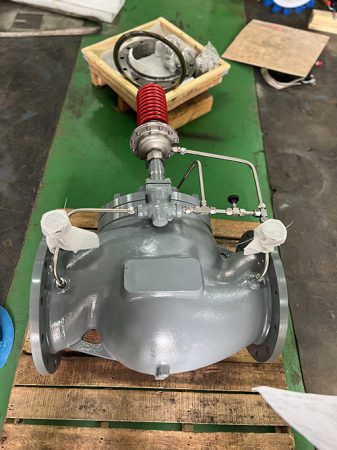
FAQ
What is the main job of a steam reducing valve?
You use a steam reducing valve to lower and control steam pressure in your system. This keeps your equipment safe and helps your steam system work better.
How do you know if your valve is working right?
Check the pressure gauges before and after the valve. If the pressure stays steady at your set point, your valve works well. Sudden changes may mean you need to inspect the valve.
Can you install a steam reducing valve yourself?
You can install a valve if you follow the manufacturer’s instructions and have basic plumbing skills. For large or complex systems, you should ask a trained technician for help.
How often should you check or maintain your valve?
You should inspect your valve every three to six months. Look for leaks, test the pressure, and clean strainers. Regular checks help you catch problems early.
What happens if you pick the wrong valve size?
If you choose a valve that is too big, you may get pressure swings and leaks. If the valve is too small, it cannot handle enough steam. Always size your valve based on your system’s needs.
Do steam reducing valves need electricity to work?
Most steam reducing valves do not need electricity. They use the steam’s own pressure to open and close. Some special valves may use electric or pneumatic controls.
What should you do if your valve leaks?
Tighten bolts and replace worn seals or gaskets. If the leak does not stop, you may need to clean or replace the valve seat. Always turn off the steam before making repairs.
Can you use one valve for all types of steam?
No, you should match the valve material and type to your steam’s pressure and temperature. Using the wrong valve can cause damage or safety risks.
